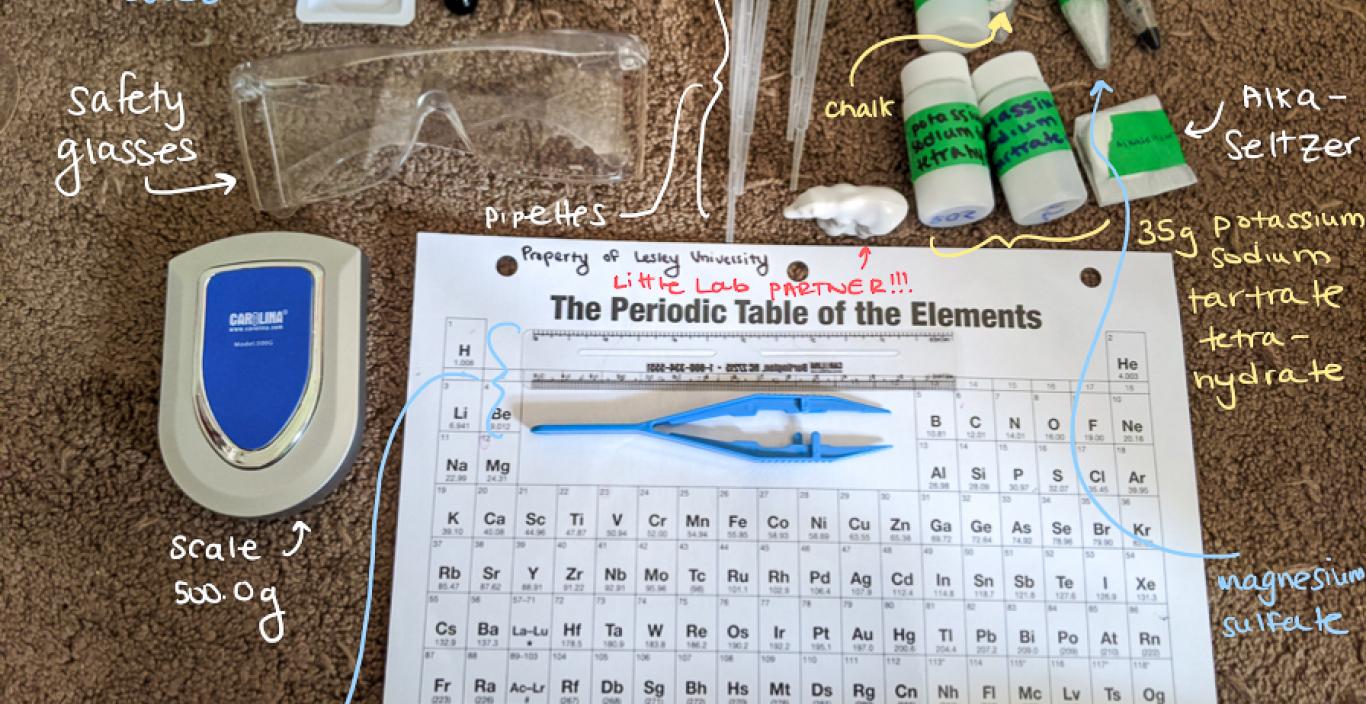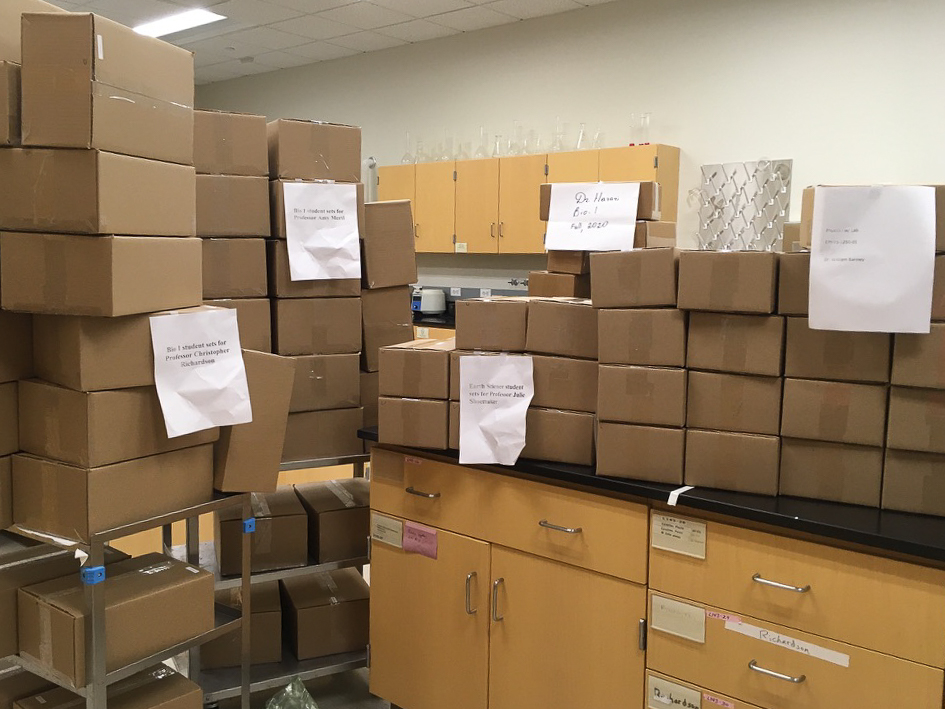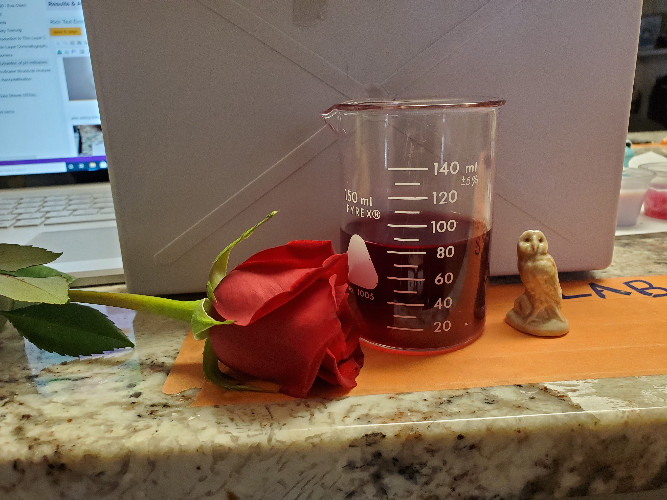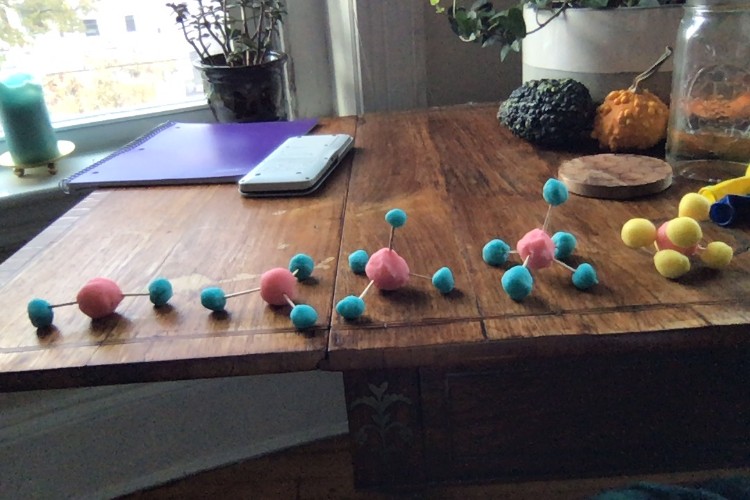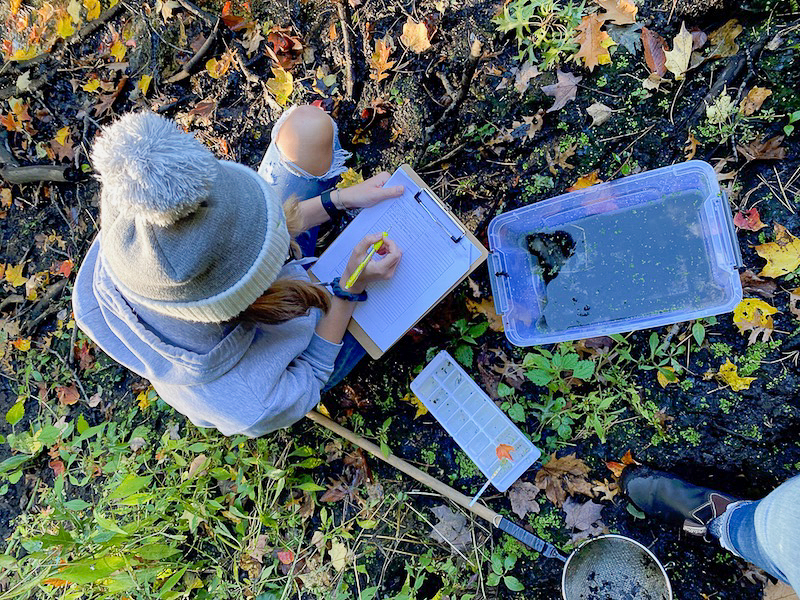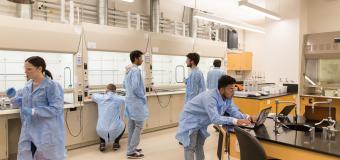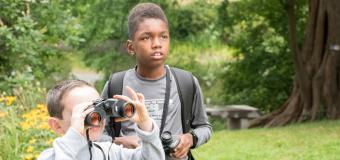Biology major Alan Liu ’22 is among the students who tore open boxes brimming with materials ranging from chemicals and microscopes to Pop Rocks candy, graduated cylinders and bird seed.
It was part of a major undertaking by faculty in the Natural Sciences and Mathematics division, who designed and created 170 lab kits so their students could experience the hands-on learning they would have done on campus pre-COVID.
"We each have our own little kits, and we’re performing (labs) in a space that’s comfortable,” said Liu. “We have lab partners, but we each have our own kits, so we can do the experiments ourselves and gain all of the experience.”
It was important to faculty and staff that students got the full lab experience while learning remotely.
Led by Science Lab Technician and Manager Nataliya Ryzhenko, the team worked closely with vendors and managed everything from ordering and receiving to assembly, lab safety instructions and shipping to student’s homes. Ryzhenko assembled and packaged 91 of the kits herself, with the help of her family.
Faculty and staff made sure the students had fun, too. Like Assistant Professor Grace Ferris and Associate Professor Nicole Weber, who added a toy “lab partner” in each kit. Dr Ferris included green confetti paper for a touch of Lesley pride.
“One thing we lose by being remote is the physical presence of a lab partner. I thought, ‘How fun would it be if I sent a little animal in everybody’s kits?’” said Ferris. “I actually sourced those from the Sommerville Buy Nothing Group. I just asked, ‘Does anyone have spare little figurines or animals?’ I drove around Somerville picking these up from different people’s houses and put something unique in everyone’s box.”
Creating new ways to access science at home
When campus closed last March as the pandemic hit, Weber surveyed her botany students about their needs in the new remote-learning world. The survey results prompted her to send everyone kits, making it possible for her students to perform labs at home.
This sparked a university-wide conversation and series of meetings led by Weber and Professor Kristina Lamour Sansone with faculty across the undergraduate disciplines. The group focused on creating the best possible remote learning experience for students in the arts, sciences, education, art therapy and more, and they resolved to make packages and provide students with an exciting, personalized “unboxing experience.”
Faculty and staff reevaluated curriculum and adapted projects that couldn’t be safely executed outside of the campus laboratories and facilities, like organic chemistry for example. Instead of using potentially dangerous chemicals, Ferris came up with ways for students to conduct each lab with water in a way that would still convey the basic concepts.
Ferris also taught general chemistry last fall, in which she assigned a project that involved building 3D molecular models. To make this possible, she made seven and a half pounds of playdough from scratch and split it between the students.
Weber included birdseed, bags of soil, rocks and feathers in the kits for her ecology and environmental science students for outdoor lab activities.
Staying calm and on track
Faculty in the College of Liberal Arts and Sciences' Natural Sciences and Mathematics who collaborated on the initiative include professors Amy Mertl, Bill Barowy, Grace Ferris, Nicole Weber, Christopher Richardson, Joseph Harari and Julie Shoemaker.
Copy and Mail Center Manager Tyler Roberge also played a key role by retrieving and shipping the boxes through the university’s mailroom. Budget and Operations Manager Brian Greene tracked expenditures and College of Art & Design colleagues made sure the package design was up to par.
Division Chair David Morimoto and Ryzhenko oversaw this process.
“David Morimoto kept everyone calm, positive, and on track,” Ryzhenko recalled.
In all, the team provided undergraduate students with 61 biology kits, 10 anatomy and physiology kits, 19 general chemistry, 13 organic chemistry kits, 20 physics kits, 15 earth science kits, 17 ecology kits and 15 environmental science kits with different materials tailored to each course.
To prepare for the spring semester, Ryzhenko and the faculty improved the experience further by creating instructional videos to help students use the kits, something Professor Christopher Richardson was did for his students throughout the fall semester. Ryzhenko is also making videos for faculty as they navigate this process for the first time.
After a successful first round, students are eager for what the next lab kits have in store.
"I surveyed my students, and across the board, they were really excited by the kits," says Ferris. "They could tell how much thought and effort went into each kit. They felt really lucky, fortunate and cared for."
